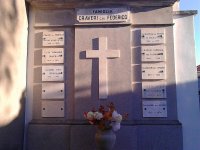Björn Bergenholtz
(former alias "Calalp")

Dead end ...
● Oedicnemus csongor MADARÁZS 1909 [syn. Burhinus capensis LICHTENSTEIN 1823]
= the Hungarian Publisher (Laptulajdonos) Csongor Pete (in Hungarian apparently written the opposite way around; Pete Gsongor), whom together with Madarázs (in 1907 or 1908) founded of the Hazai Zoológiai Laboratorium (the Hungarian zoolocial laboratory, that seems more like a Taxidermy Studio), and publisher of the journal Archivum Zoologicum (1909-1910).
If he is equal of the "multimillionaire" with the same name, who founded the first Record Company in Hungary I do not know. I haven´t been able to find any connections nor hints of links between the zoological and the musical Workshops.
Sorry, but that’s as far as I get. No birth, no death, nothing more.
Good luck finding him!
Björn
PS. If James's "?Csongor Zsigmond Zoltan Pete (b. 1874)" (in today's HBWAlive Key) is linked to either the journal or the "Laboratorium" I do not know.
---
● Oedicnemus csongor MADARÁZS 1909 [syn. Burhinus capensis LICHTENSTEIN 1823]
= the Hungarian Publisher (Laptulajdonos) Csongor Pete (in Hungarian apparently written the opposite way around; Pete Gsongor), whom together with Madarázs (in 1907 or 1908) founded of the Hazai Zoológiai Laboratorium (the Hungarian zoolocial laboratory, that seems more like a Taxidermy Studio), and publisher of the journal Archivum Zoologicum (1909-1910).
If he is equal of the "multimillionaire" with the same name, who founded the first Record Company in Hungary I do not know. I haven´t been able to find any connections nor hints of links between the zoological and the musical Workshops.
Sorry, but that’s as far as I get. No birth, no death, nothing more.
Good luck finding him!
Björn
PS. If James's "?Csongor Zsigmond Zoltan Pete (b. 1874)" (in today's HBWAlive Key) is linked to either the journal or the "Laboratorium" I do not know.
---
Last edited:







